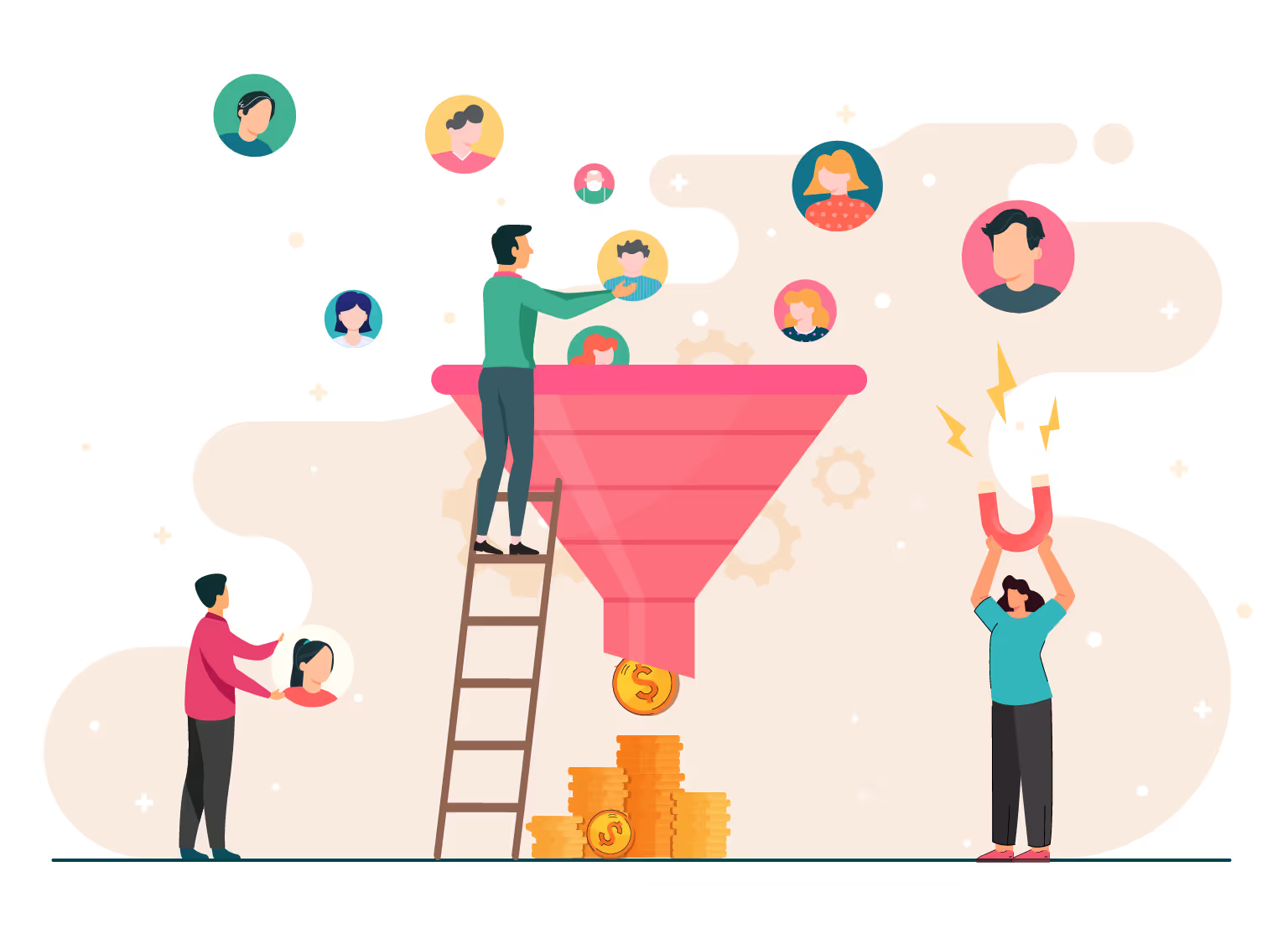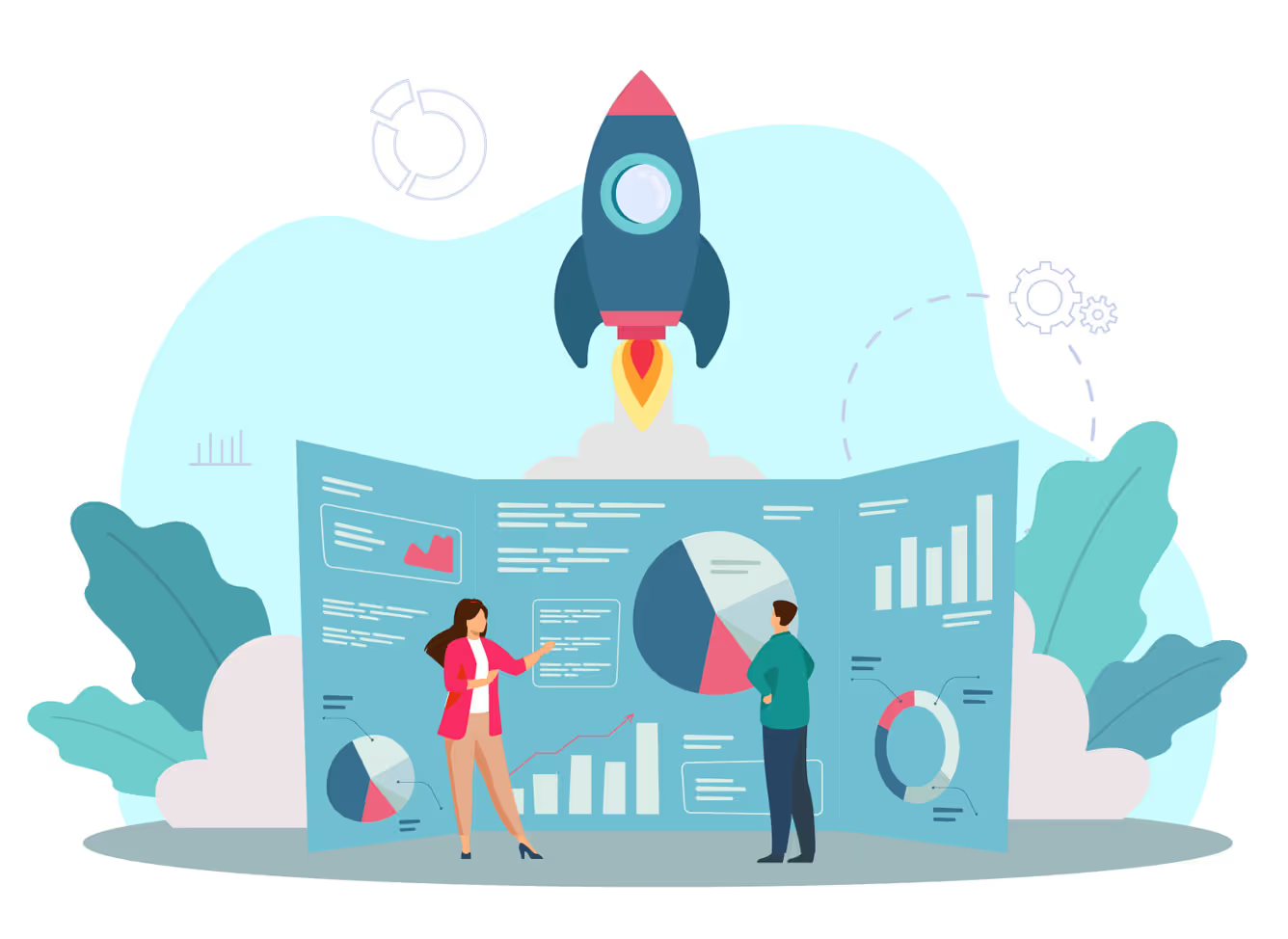
Blog
What is Lead Funnel and How to Build One For Your Business
October 13, 2023


Key Insights
What is the greatest challenge that marketers and salesforce face in general?
Statistics show that 37% of marketers stated that generating high-quality leads was one of their biggest challenges.
This means that there needs to be a comprehensive tool that shows the effectiveness of marketing strategies and lead generation.
But what is the solution?
Different types of sales leads, such as cold, warm, and hot leads, can be effectively categorized and managed within the lead funnel, enabling a tailored approach to nurturing and closing deals based on lead readiness and engagement level.
In this article we will explore lead funnel, how it works, lead funnel stages, how to create a lead funnel, and best practices for your lead funnel.
What is a lead funnel?
Lead funnel refers to the representation of the potential customer’s journey as they move from being aware of the product to considering buying it to closing deals with the company.
The lead funnel is in the shape of an inverted pyramid as the number of people aware of your product or the potential leads is always higher than the number of prospects who close the deal.

How does a lead funnel work?
The lead funnel is usually divided into two parts. The lead generation funnel depends on the marketing initiatives while the customer journey through the sales lead funnel stages is dependent on the sales initiatives.
The lead generation funnel refers to the marketing initiatives that qualify leads as prospects whom the sales can approach for selling the product. The sales lead funnel is the lower area of the lead funnel where the sales team qualifies and converts the prospects to close a deal with them.
Now there is no clear bifurcation as to where the marketing initiatives end and the sales process begins. But both these initiatives work together to ensure that the prospects move faster from the awareness stage to the conversion stage to finally make a successful sale.
What are the Lead funnel stages?
Broadly the lead funnel can be divided into three stages. Let's look further into these lead funnel stages to understand them in detail.

1. Top of the funnel (Awareness)
Effective sales territory management at the top of the funnel ensures that marketing and sales efforts are strategically directed toward specific regions or customer segments, maximizing brand exposure and awareness in target markets.
For example, blog content, social media presence, LinkedIn posts, etc are ways people and businesses will come across you. When a business wants to know more about incentive compensation the first place they will go to search about the topic is Google. When the search engine pops Kennect as its first search result, people will read about the topic as well as know there exists a company named Kennect.
Coming across the brand name during their search on the topic will eventually influence them when deciding to incorporate incentive solutions into their operations.
- Middle of the funnel (Consideration)
Middle of the funnel is the second stage where prospects are already aware of the solutions available and considering which to choose. Here the marketing and sales approach will be to point out how your product is an ideal choice compared to the competitors.
For example, consistently pursuing prospects through personalized email campaigns can influence their decision. But care must be taken not to sound desperate or make it overwhelming for the customer.
Implementing a well-defined sales transformation strategy provides sales reps with the tools and guidance to foster stronger customer relationships and utilize prospect responses as key insights for aligning their next steps in the sales process.
- Bottom of the funnel (Conversion)
When your prospect reaches the bottom of the funnel they have a clear idea of what they want. They would have drawn a checklist of their requirements, the expected features, the budget they can afford, etc.
Though it feels like the final step before closing the deal, the decision-making of the prospect is still left. Hence, the way sales reps handle the situation will influence whether the customer will choose your product over others.
Offering free demos, discounts, and other rewards will help prospects to make an easy decision for you. It must be seen as a long-term relationship building between the two parties rather than a one-time sale to meet quotas.
The seamless journey of the potential customer through the lead funnel is very much dependent on both the marketing strategies and the sales initiatives. Teamwork will ensure successful conversions.
For further reading, check Sales Pipeline vs Sales Funnel: Spot the Difference.
Step-by-step process on how to create a lead funnel
Salesforce leads and opportunities management can enhance the effectiveness of the lead funnel by providing a structured platform for tracking and addressing individual sales objections, ensuring a more customized and adaptable approach to converting prospects into profitable opportunities.
Rather, according to the situation, companies must use it as a road map and be flexible to eventually reach the destination of closing the deal. So here is a lead funnel example you can follow while creating your own.

- Creating A Good Online Presence
The basic step to building a lead funnel is creating a good online presence. Internet being the primary platform where people research and look for information, companies must strategize their marketing initiatives.
Creating blog content and optimizing it through SEO, having a strong social media presence, and sharing industry-related LinkedIn posts as well as optimizing these initiatives through Google ads are some of the successful ways companies can increase their brand awareness. Additionally, offering a free sales funnel template on your website can be a valuable resource for businesses looking to structure their lead management process effectively.
- Strong Follow-up techniques
Building and sharing effective email campaigns and approaching clients through sales reps can influence their consideration stage.
Companies must choose talented salesforce who can have a positive impact on the prospects and engaging email campaigns that they open. Providing impressive product demos that highlight the features and benefits of the product can also influence the prospect's decision-making.
- Building Client Relationship
Building relationships must be of more priority than selling the product. Companies must always be clear of this motto as its relationships that help companies grow after a while rather than the number of products sold.
Sales reps must thus be skilled in approaching prospects to understand their challenges, needs, and requirements. Then resolve these issues by sharing the benefits, offers, and other perks of incorporating the product into their business operations.
Bringing a structured approach to business operations will always help enhance efficiency and boost performance.
Best Practices for Your Lead Funnel
While traversing through the lead funnel, marketing and salesforce must be cautious of their words and actions. Hence, companies must keep in mind some best practices that will help them stand out in the crowd.
- Lead qualification must be carried out thoroughly to ensure that the prospects on whom you put time and effort are people who are really in need of your product.
- Sales reps must always be calm in building relationships rather than selling their products to meet the quotas.
- Scheduling a discovery call to understand the client’s challenges, requirements, and needs will help sales reps to be better prepared while leading them through the lead funnel.
- Highlight the features and benefits of incorporating your product in the business operations as it makes the decision-making process easier.
- Even if a prospect backs out of the sale or makes a deal, always ensure to get their feedback. This helps understand the weak areas and strengthen the lead funnel and sales process.
Being mindful of the small details while approaching the prospects will help in making the client journey through the lead funnel smooth and seamless.
For further reading, Maximizing Revenue with Effective Sales Funnel Management.
Final thoughts
Incorporating tools and techniques that monitor and track progress and performance helps companies get a comprehensive view of their areas of strength and weakness. Incorporating tools and techniques that monitor and track progress and performance helps companies get a comprehensive view of their areas of strength and weakness. This B2B SaaS marketing guide is one such tool that helps sales and marketing teams understand the efficiency of their strategies and plans.
Lead funnel is one such tool that helps sales and marketing teams understand the efficiency of their strategies and plans.
With automation ruling business operations, companies must keep themselves open to all innovations that make their everyday routine tasks hassle-free and efficient, such as implementing a sales commission calculator.
When the market is becoming increasingly competitive companies must take those extra steps to bring clarity, transparency, and efficiency in their operations.
Kennect fully automated incentive compensation management and sales performance management solution leverages a data-driven approach to build, run, and automate your incentive compensation plans to create transparency and achieve operational efficiency.
For more information Book A Demo Today.
ReKennect : Stay ahead of the curve!
Subscribe to our bi-weekly newsletter packed with latest trends and insights on incentives.
Thank you! Your submission has been received!
Oops! Something went wrong while submitting the form.
Your data is in safe hands. Check out our Privacy policy for more info





%20(1)%20(1).avif)










